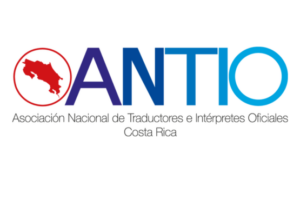
 Language, as a living and dynamic entity, is constantly swayed between the need to follow fundamental rules that preserve clarity and effective communication and the desire to adapt to social and cultural changes. This dichotomy, as discussed by the philologist Rafael Ángel Herra, reflects an apparent conflict. In this article, I will discuss how fundamental linguistic rules and the current debates on inclusive language illustrate this tension between standards and innovation.
Language, as a living and dynamic entity, is constantly swayed between the need to follow fundamental rules that preserve clarity and effective communication and the desire to adapt to social and cultural changes. This dichotomy, as discussed by the philologist Rafael Ángel Herra, reflects an apparent conflict. In this article, I will discuss how fundamental linguistic rules and the current debates on inclusive language illustrate this tension between standards and innovation.
Grammar, syntax, and punctuation are the pillars that support linguistic clarity. These rules, which Herra describes as ‘inflexible’, are not arbitrary, but ensure that messages are understandable and coherent for all speakers. However, language is also a social, creative, and spontaneous phenomenon that constantly adapts to the changing needs of its users. This living nature drives the addition of new words, expressions, and grammatical structures. On the other hand, as Herra warns, neglecting the fundamental rules can lead to chaos in communication, turning the language into a ‘devil’s feast’ where mutual understanding collapses.
In this context, the Real Academia Española (RAE)’s stance on inclusive language becomes relevant. The RAE defends the use of the grammatical masculine as the unmarked form, arguing that the word ‘todos’ (everyone) includes all genders without the need for split expressions such as ‘todos y todas’, or neologisms like ‘todes’. According to the RAE, these practices are unnecessary and extraneous to the traditional structure of Spanish. They are also considered to affect the language’s economy and fluidity, which are essential for clear and efficient communication.
Meanwhile, defenders of inclusive language argue that the traditional forms of language perpetuate inequalities by making certain groups invisible. From this perspective, language is not just a means of communication, but also a tool for social change that must be adapted to reflect values of equity and diversity. However, even among groups that promote such changes, there is no consensus on the exact definition of inclusive language, which adds complexity to the debate.
The challenge lies in finding a balance between linguistic clarity and social needs. We must preserve grammar, syntax, and punctuation as structural elements, while also recognising that language is constantly changing. Changes must be integrated in an orderly manner, without sacrificing the language’s ability to communicate ideas accurately and efficiently.
As Herra notes, the lively and creative nature of language must not descend into uncontrolled mayhem that compromises its main function: clear communication. Spanish, as an evolving language, can incorporate changes that reflect diversity without losing its essence. However, these changes must arise naturally and be broadly accepted to prevent the language from losing its cohesion and efficacy.
Arcelio Hernández Mussio (ANTIO Costa Rica)
